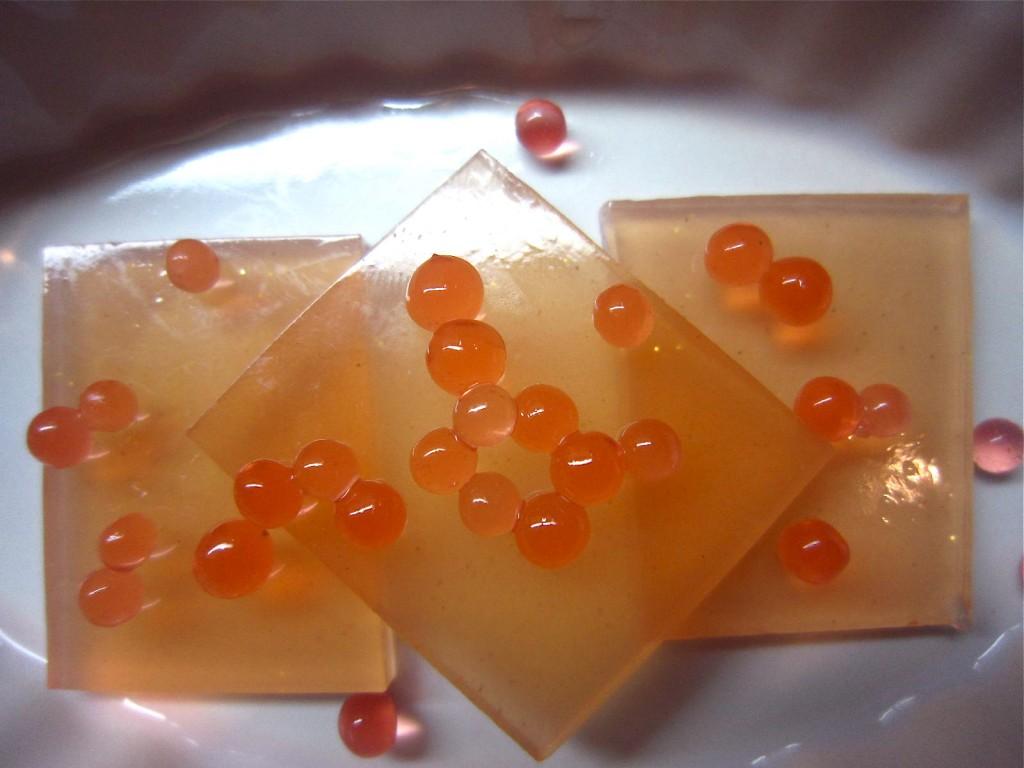This is a blog post from Charles Mire, co-founder and president of Structur3D printing, who recently released their Discov3ry add-on paste extruder.
Eating and enjoying food is a central part of the human experience, so it’s natural that printing food attracts a lot of attention from the general public. Food makes the technology of 3D printing relevant and interesting to everyone.
Until recently, 3D printing food required a specialized printer. One of many reasons we’re excited about our Discov3ry add-on paste extruder, is enabling anyone with a desktop 3D printer to experiment with edible printing. The experiments outlined in this article don’t require the Discov3ry extruder, but it’s probably the most accessible tool for the job.
The possibilities for printed food go well beyond just extruding edible pastes. Nearly all fine gastronomy is a result of complex chemical reactions, so in this article we’ll discuss the potential for reaction-based printing. This is the process of printing one substance into another to trigger a chemical reaction with an interesting, and hopefully tasty result.
Alginate beads are a great example of a simple chemical reaction being used to create interesting new foods. They begin with two primary ingredients: sodium alginate and a calcium solution (calcium chloride, calcium lactate, or calcium lactate gluconate). Don’t let the chemical names intimidate you. Sodium alginate is derived from brown seaweed and is flavorless.
When sodium alginate drops fall into the calcium solution, the calcium ions immediately react with the alginate to form a gel. Since the drop is spherical, the result of the reaction is also a sphere. Because of the spherical shape, alginate beads are commonly called “caviar” in gastronomic circles. They are naturally quite flavorless, which allows you to influence the flavor by adding fruit juices, liqueurs, or anything else that suits you fancy.
So where does 3D printing come into this? The basic method of making this food “caviar”, is to manually dispense alginate solution into a bowl containing the calcium solution, one drop at a time. To step things up, you could put your bowl of calcium solution onto the stage of your 3D printer and use a repeating print cycle to dispense the drops. Using a printer will likely get you uniform drops every single time, and leaves you to focus on the other details like color and flavor combinations.
If that example is still too easy for you, you can use a 3D printer to print alginate “noodles.” To do this, you would use a longer needle on your extruder so that it can be submerged in the calcium solution. While submerged, the 3D printer then prints your noodle pattern. Instead of little caviar beads that explode with an interesting flavour, you now have this in noodle-like form. You could use this in a salad to release a dressing or with meats or vegetables to release a sauce.
A few pre-cautions: You have to pay attention to details like the acidity, or your alginate chemical reaction won’t work. You might also have to tune the viscosity of the calcium solution so as to allow the noodle to “stick” into the solution and not get dragged along with the tip. But there’s some interesting potential here.
For guidance on flavorings, here is some further reading:
https://www.molecularrecipes.com/spherification/basic-spherification/
https://undermyknife.com/tag/heston-blumenthal/
https://www.foodnrecipe.com/articles/2054/20120817/molecular-gastronomy-spherification-recipe-foodnrecipes-4-loko.htm
https://www.instructables.com/id/Guava-Vodka-Caviar-Pearls/
Discuss the Structure3D extruder in the Discov3ry forum thread on 3DPB.com. If you want to dive a little deeper into the chemistry, here are a couple of journal articles to get you started: Ana Blandino, et al., Formation of Calcium Alginate Gel Capsules:
Influence of Sodium Alginate and CaCl2 Concentration on Gelation Kinetics, Journal of Bioscience and Bioengineering, vol. 88, 1999, 686-689. C. Ourwerx, et al., Physio-chemical properties and rheology of alginate gel beads formed with various divalent cations, Polymer gels and networks, vol. 6, 1998, 393-408.
Bon appétit!
Subscribe to Our Email Newsletter
Stay up-to-date on all the latest news from the 3D printing industry and receive information and offers from third party vendors.
You May Also Like
3D Printing Unpeeled: New Arkema Material for HP, Saddle and Macro MEMS
A new Arkema material for MJF is said to reduce costs per part by up to 25% and have an 85% reusability ratio. HP 3D HR PA 12 S has been...
3D Printing News Briefs, January 20, 2024: FDM, LPBF, Underwater 3D Printer, Racing, & More
We’re starting off with a process certification in today’s 3D Printing News Briefs, and then moving on to research about solute trapping, laser powder bed fusion, and then moving on...
3D Printing Webinar and Event Roundup: December 3, 2023
We’ve got plenty of events and webinars coming up for you this week! Quickparts is having a Manufacturing Roadshow, America Makes is holding a Member Town Hall, Stratafest makes two...
Formnext 2023 Day Three: Slam Dunk
I’m high—high on trade show. I’ve met numerous new faces and reconnected with old friends, creating an absolutely wonderful atmosphere. The excitement is palpable over several emerging developments. The high...
































